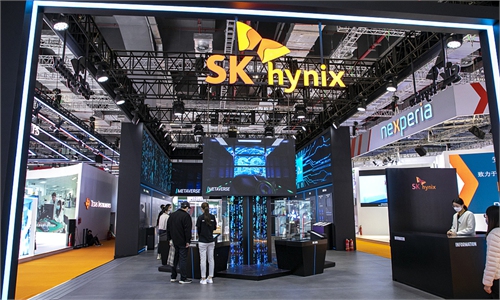COMMENTS / EXPERT ASSESSMENT
Semiconductor supply chain to see more volatility this year

Illustration: Tang Tengfei/Global Times
The global shortage of semiconductors has been sustained for over a year, with no ending in sight. Industrial reports revealed recently that delivery time for chips increased again in December 2021, dampening the outlook of related industries that relate to nearly all segments of the global economy.The delivery time between when a semiconductor is ordered and when it is delivered stood at about 25.8 weeks in December, an increase of six days from November levels, Bloomberg reported, citing an industrial report released by Susquehanna Financial Group. It was the longest delivery timespan since Susquehanna started tracing the data in 2017.
Industrial institutions and observers have been busy revising estimates of when the shortage would likely be eased; however, it has become increasingly difficult to offer a reasonable forecast in the light of present situation. One thing that can be certain is the semiconductor industry will endure continuing fluctuations throughout 2022.
There is a list of reasons behind the fluctuations, including Washington's efforts to disrupt the global supply chain which has sent shockwaves throughout the sector, and the imminent mid-term election in the US which may again alter the country's policy direction.
Amid the historical trend of globalization, the semiconductor industry is one the representatives marking the global division of labor based on each economy's comparative advantages. The trend line following economic rules, however, goes against the US' hegemonic position in the field, especially when Chinese advanced technology is catching up or surpassing the US in many respects.
Holding an aim to contain the development of China, the US has been attempting to crack down on Chinese companies, including the moves attempting to isolate China out of the global semiconductor supply chain.
In addition, industrial players' concern over a possible supply backlog has been preventing producers from expanding production. Given that there are currently too many factors impacting both the supply and demand sides of the industry, many producers are taking a "wait and see" approach in case prices tumble due to over-supply on the market.
Moreover, the current resurgence of COVID-19 in the West is again dampening the recovery of the industry from production to logistics.
All these factors are keeping the global shortage of microchips from being addressed. However, it could be a historical opportunity for Chinese chipmakers despite growing risks amid the fluctuations.
On one hand, low-end chipmakers in China have seen easier access to the market as the US has been blocking its companies from supplying products to Chinese tech firms. In addition with policy support, small Chinese chipmakers are now facing a historic opportunity to enter the market and grow. On the other hand, Chinese chip producers are now aware of the urgency to speed up technological development so as to survive the US blockade.
Meanwhile, with the implementation of the Regional Comprehensive Economic Partnership (RCEP), China, Japan and South Korea could have an opportunity to form a complementary chip supply chain free of US' interference.
To sum it up, though the fluctuation of the industry may continue, underlying development trend have seen changing directions. The US government' wielding sticks, originally believed by many to be fatal for Chinese firms, have seen diminishing influence. Chinese 5G developer Huawei has survived the US' bullying, and recently listed SenseTime has again proved that the US' crackdown cannot dampen the innovational ability and enthusiasm of Chinese technology companies.
The article was compiled based on an interview with Ma Jihua, a senior industry analyst. bizopinion@globaltimes.com.cn



